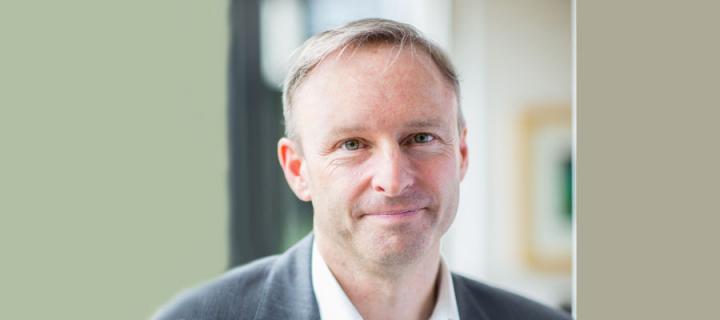Prof Mike Cousin
Alumnus Professor Mike Cousin is the University's Chair of Neuronal Cell Biology and Head of Pre-Clinical Research at the Muir Maxwell Epilepsy Centre. He guides us through his background, career and love of collaboration.

My background
I graduated with in Biochemistry from the University of Edinburgh in 1991. One of the biggest factors in influencing my decision to undertake a scientific career was the mentoring of Professor Graham Pettigrew, who co-ran the Biochemistry honours course. Professor Pettigrew’s obvious love of the challenges, pitfalls and rewards of scientific research career have always stayed with me and I am very grateful to him for enthusing me at this impressionable age.
After Edinburgh I did a PhD at the University of Dundee where I first became fascinated by the process of neurotransmitter release, a fundamental mechanism via which brain cells communicate at structures called synapses. It was an incredibly exciting time to be in this field, and during my PhD the key molecules that mediated neurotransmitter release from the presynapse were identified, an achievement that would later be recognised with the Nobel Prize in Medicine in 2013.
After my PhD I stayed in Dundee, but moved to the Neurosciences Institute at Ninewells Hospital to continue investigating the molecular mechanism of synaptic communication at the presynapse. This was not a purely scientific decision, since at the time I was still harbouring aspirations of playing international rugby union. Suffice to say that by the end of my first postdoctoral training stint, I was fully committed to a scientific career!
Near the end of this appointment I decided to investigate a process called endocytosis, which allows the presynapse to 'recharge' after a spell of activity and is vital for sustaining neurotransmitter release. To achieve this goal I won two fellowships (Royal Society Travelling Fellowship and Human Frontiers of Science Long-Term Fellowship) to work within the laboratory of Professor Phillip Robinson at the Children’s Medical Sciences Institute in Sydney. The three years I spent in Sydney were transformative for my research.
At Edinburgh
I have now come full circle and I'm working in the same building where I read for my undergraduate degree - the Hugh Robson Building, in George Square.
My current role is multifaceted as it is for most academics. In addition to running undergraduate courses and convening examination boards, I am also heavily involved in scientific research. Amazingly I am still working on neurotransmitter release and endocytosis, however these days my science integrates a lot more translational science. This means one of my laboratories major goals is now to determine how and why presynaptic processes go wrong in human disease, and what strategies are available to correct potential deficits.
I am Basic Science Director of the Muir Maxwell Epilepsy Centre, where we have the motto “no epilepsy, better epilepsy”. The Centre spans a range of research techniques and approaches, from fundamental research all the way through to examining the impact of epilepsy on educational attainment. In addition, my work on presynaptic function and dysfunction reaches into other neurodevelopmental disorders such as autism and intellectual disability, and also neurodegenerative diseases such as Huntington’s Disease.
One of the most incredible things about Edinburgh is the collegiality of the researchers. All of the disease-related centres work exceptionally closely and share knowledge, resources, technique and staff, making us much more than the sum of our individual parts. Central to this is the fact that many of the key players now leading these centres were hired approximately at the same time. Even when we were starting out as independent researchers, we have always taken this spirit of collegiality incredibly seriously and it now means that Edinburgh is a beacon of what can be achieved when like-minded people work together in attempting to solve seemingly intractable problems.
Personally the future is also equally exciting, since I have just been awarded a Wellcome Trust Investigator Award, which will allow me to activate a 5 year research programme to determine the role of a specific endocytosis mode in brain function. The overarching goal of the programme is to determine its function at the molecular, cellular, circuit and behavioural level. This will establish a platform for future investigations which will exploit this endocytosis mode as a potential therapeutic intervention site for both neurodevelopmental and neurodegenerative conditions.
Edinburgh is a beacon of what can be achieved when like-minded people work together in attempting to solve seemingly intractable problems.andatory field.
Something I know...
The human brain has 100 billion brain cells and each brain cell has 10,000 synapses. This means there are 1014 synapses in the human brain - it’s a complicated thing!

